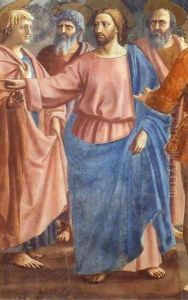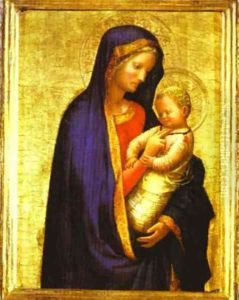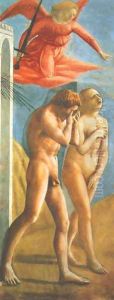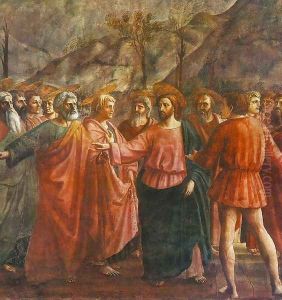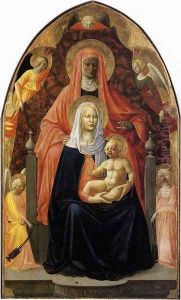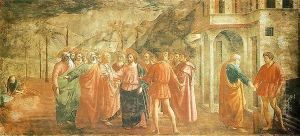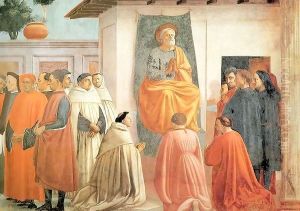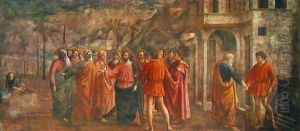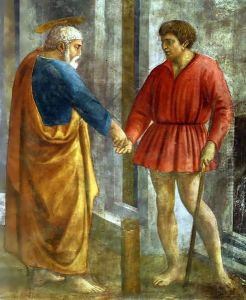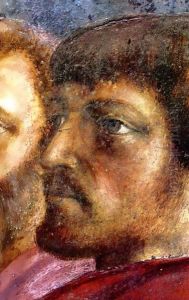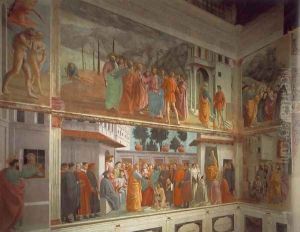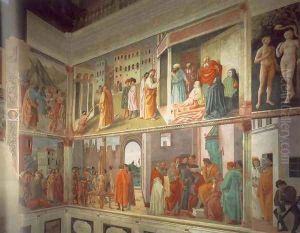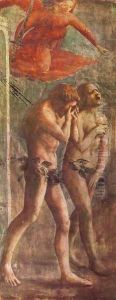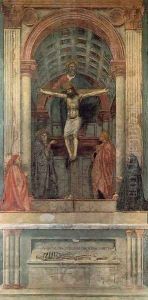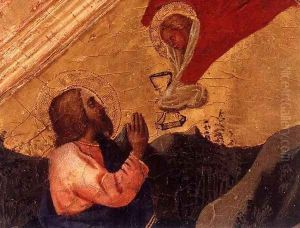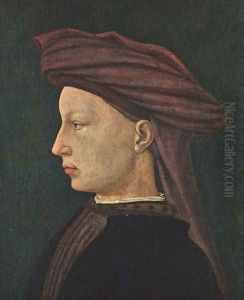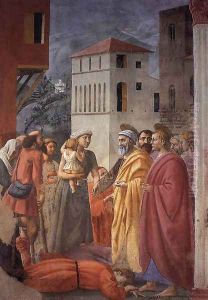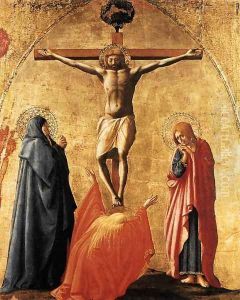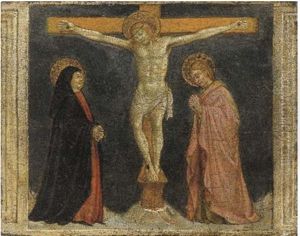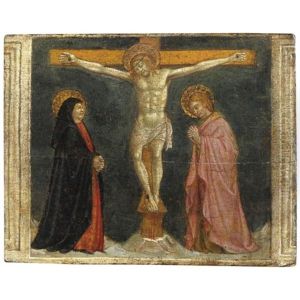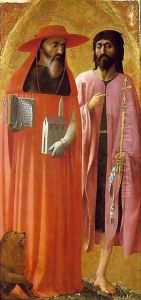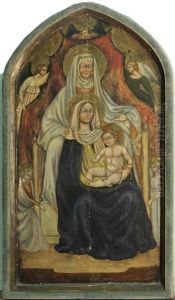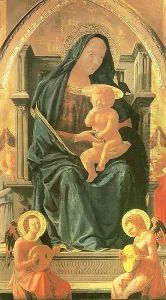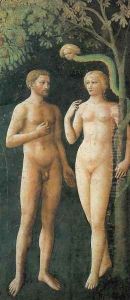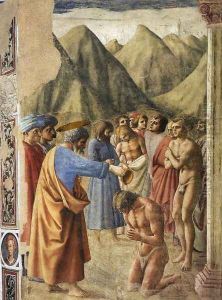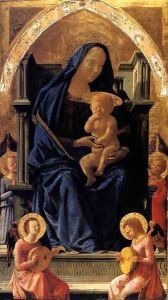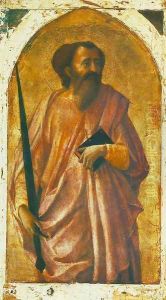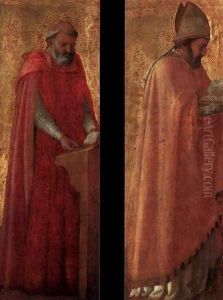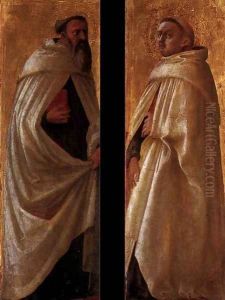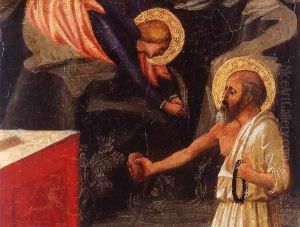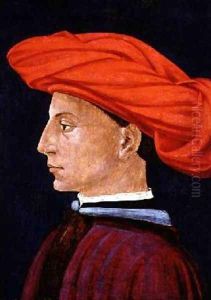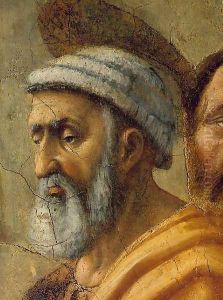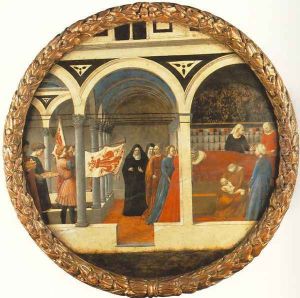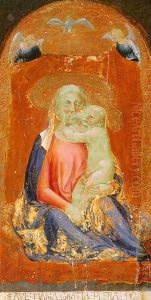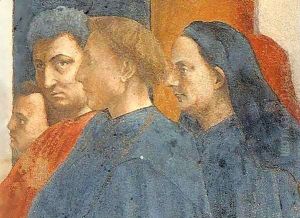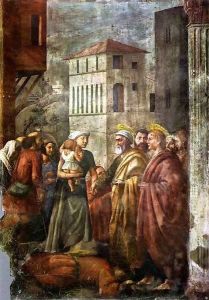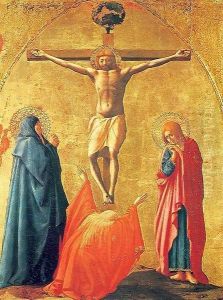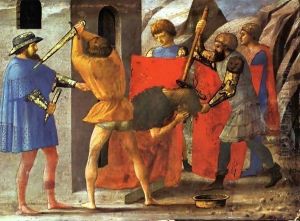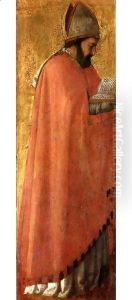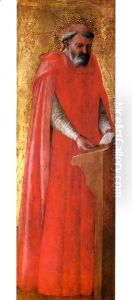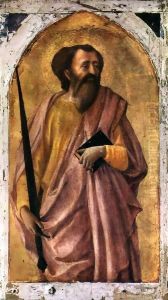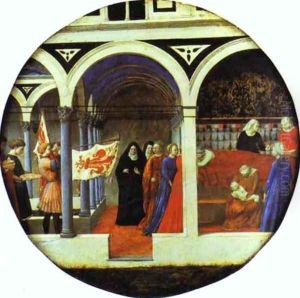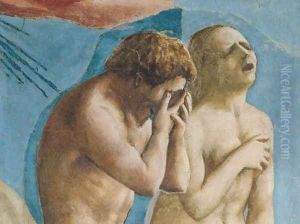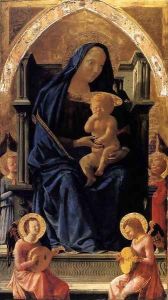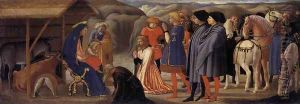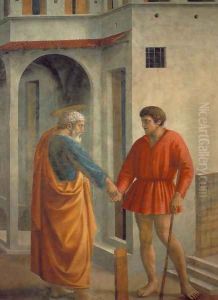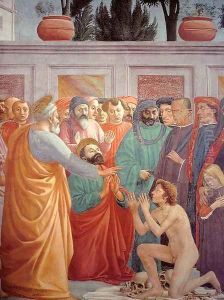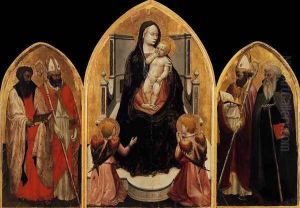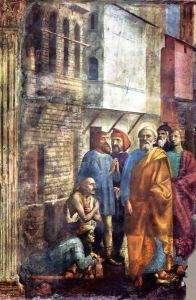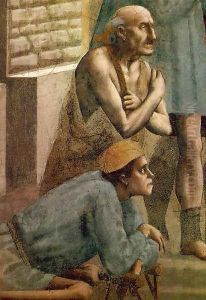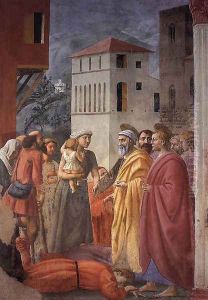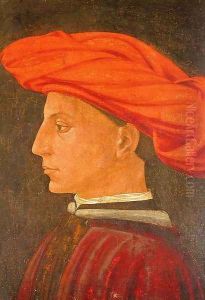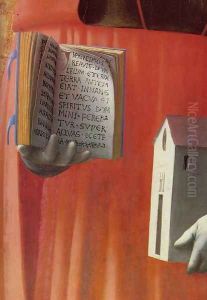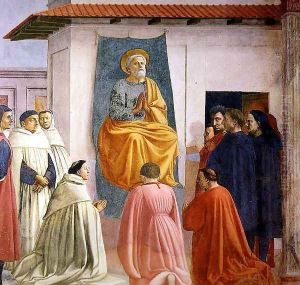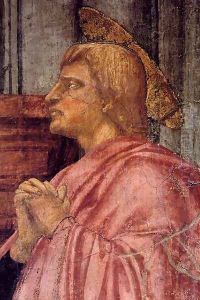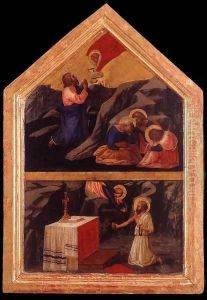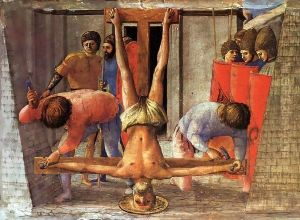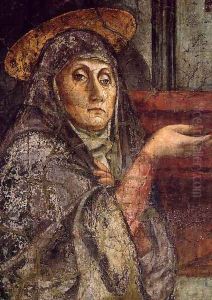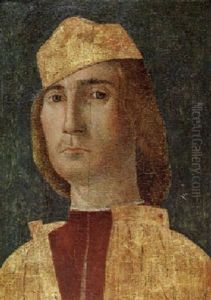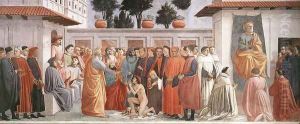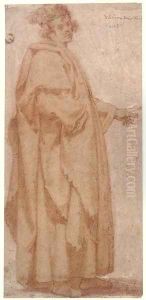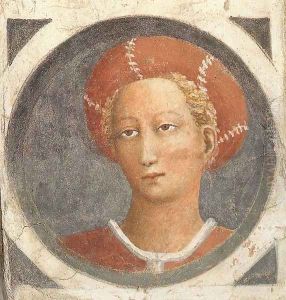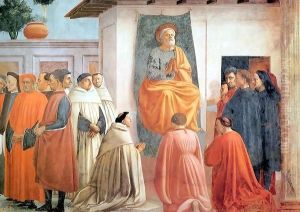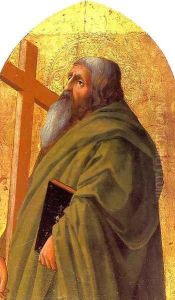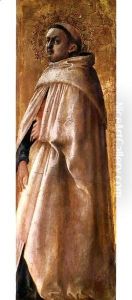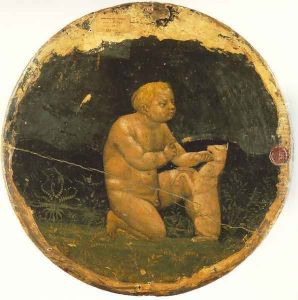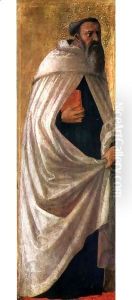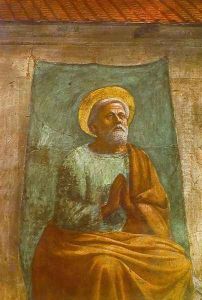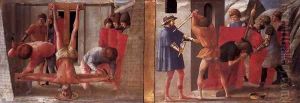Masaccio (Tommaso di Giovanni) Paintings
Masaccio, born Tommaso di Giovanni di Simone Cassai, was a significant Italian painter of the early 15th century, whose work is notable for its pioneering use of perspective and chiaroscuro. Born on December 21, 1401, in the town of Castel San Giovanni di Altura (now San Giovanni Valdarno), Tuscany, Masaccio showed artistic talent at an early age. He moved to Florence, the cradle of the Renaissance, where he would be greatly influenced by the works of Giotto and became a contemporary of other renowned artists like Brunelleschi and Donatello.
Masaccio's career was brief, as he died at the young age of 26, but his contributions to art were profound and lasting. His frescoes are considered some of the most important works of the early Renaissance, particularly those in the Brancacci Chapel of the Church of Santa Maria del Carmine in Florence. These frescoes, which depict scenes from the life of St. Peter, are celebrated for their realistic representation of human figures and the skillful use of perspective to create a convincing three-dimensional space.
One of his most famous works, the 'Holy Trinity' fresco in Santa Maria Novella, Florence, is heralded as a masterpiece of early Renaissance art. In this work, Masaccio effectively employs linear perspective, a relatively new concept at the time, guided by the mathematical principles that his friend Brunelleschi had developed. The fresco stands as a testament to the beginning of a new naturalistic approach to art, which sought to depict the world and human figures more realistically.
Masaccio's influence on later artists was significant, with figures such as Michelangelo and Raphael acknowledging his importance in the development of Western art. Despite the scarcity of surviving works attributed to him, Masaccio's legacy in the use of perspective and a more naturalistic style of painting set the stage for the achievements of High Renaissance art. His death in Rome in 1428 cut short a career that had only just begun to flourish, but the innovations and quality of his work secured his reputation as a pivotal figure in the history of art.
